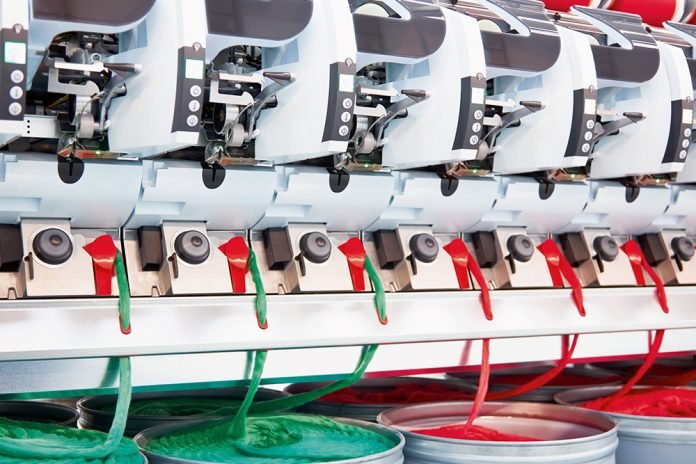Thanks to the new features, customers can produce more sustainably with the Autocoro 11 and, at the same time, save up to 50 percent on raw material costs.
The variety of recycled fibers and blends is huge; each is different. Mechanically recycled fibers, for example, are up to 40 percent shorter than new fibers, have a high variation in fiber length distribution, and contain dust-like fragments.
Therefore, The spinning rules are somewhat different from those for classic new fibers. For example, when spinning new raw cotton, the aim is to eliminate short fibers and dust-like fiber fragments to achieve maximum rotor speeds, as few yarn breaks as possible, plus the best yarn quality values; sustainable spinning aims to lose as little raw material as possible and, ideally, to spin everything into the yarn.
The Autocoro 11 with Recycling Xtreme addresses the diverse requirements. It offers an intelligent interplay of possibilities to produce the best possible yarn from every blend in terms of productivity and quality.
I recycled raw materials, and Autocoro has already made a good team. Most Autocoro spinning mills process sustainable raw materials, and the trend is rising. Recycling Xtreme and an optimally selected Belcoro spinning agent combination now open up even more opportunities for companies to combine economic efficiency and sustainability skillfully.
An essential piece in this game is the spin box of the Autocoro 11 and the spin box SE 21. It is equipped with dirt-repellent aluminum caps that prevent, for example, static charges from accumulating on the spin box surface in the area of the opening roller housing, which would have to be removed manually.
New fiber beard supports are clipped in without tools, and the flow conditions in the opening roller housing are adjusted so that valuable recycled raw material is incorporated into the yarn and not separated.
Another move for successful recycling processing is the selection of rotors with a groove shape, rotor coating, and diameter tailored to the raw material. Blends of recycled polyester with waste from the spinning mill are popular. Yarns made from these materials are often relatively coarse and are used, for example, for the napped inside sweatshirts. With such raw materials, the rotor grooves tend to become heavily soiled, the yarn quality can fluctuate, and the number of yarn breaks increases. Rotors with a narrow rotor groove, the T-groove, are then a good choice. The T-groove perfectly presses the short fibers into the groove and binds them into the yarn, ensuring good yarn strength.
Further tuning of yarn strength, elongation, uniformity, and productivity can be achieved by selecting a slightly smaller rotor, as the smaller diameter further increases fiber integration. For a coarse lining yarn made from recycled fibers, the spin box SE 21 achieved strength increases of 0.4 cN/tex and an elongation increase of more than 1% thanks to a rotor that was only 4 mm smaller.
Rotors with a pure boride coating are well suited for relatively coarse yarns consisting of blends with a high proportion of soiled cotton waste from the spinning mill, such as the roving frame. The mixes contain many vegetable components from the cotton, such as trash, short fiber fragments, and dust particles.
The smooth boride coating is remarkably robust against the abrasive properties of such fibers, and the lack of diamond coating on these rotors makes the rotors smoother, reducing unwanted deposits in the rotor groove and cleaning the rotors easier. The longer fibers in such blends, which are particularly relevant for the quality of the yarn, are effectively bound in the clean rotor groove. Yarn formation is precisely controlled and not subject to fluctuations due to partial deposits in the rotor groove.
Sustainable textiles from finer yarns, such as T-shirts, are also prevalent. They often consist of blends of chemically recycled polyester with high-quality raw or mechanically recycled cotton from the pre-consumer sector. The proportion of fiber fragments and vegetable particles is significantly lower in these mixtures. Coupled with a substantially smaller rotor diameter of the boride diamond-coated rotors, the yarns achieve a significant increase in yarn strength, elongation yarn evenness, and productivity thanks to a higher rotor speed.



